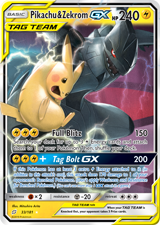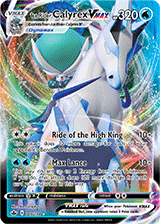Check out which cards and decks will be affected by the upcoming Pokémon TCG Standard rotation.
By Robin Schulz, Contributing Writer
The yearly Standard rotation is right around the corner and will be
removing all the remaining Sun & Moon Series expansions from the
format. It’s a time when we have to say goodbye to some old favorites, but it’s
also exciting to look forward to which decks may emerge victorious in this new
environment.
Keep reading to find
out about some of the key cards that are leaving, along with the implications that
has on the format, before we dive deeper into a few of the decks that I think
will continue to have success.
Ever since their debut
in Sun & Moon—Team Up, TAG TEAM Pokémon-GX have been at the
center of competitive play. While they have been somewhat overshadowed by newer
Pokémon VMAX at this point, a few of them have held up until the very end.
Anyone who has been reading our pre-event Power Rankings will be familiar with Pikachu & Zekrom-GX and Arceus & Dialga & Palkia-GX.
Even at the most recent Players Cup IV Global Finals, one-third of the players
used decks that were centered around a TAG TEAM.
Now every TAG TEAM is leaving
the Standard format, and we’re moving on to Pokémon VMAX as the Pokémon that are
worth 3 Prize cards when Knocked Out. I know I’m going to miss Mewtwo & Mew-GX and all
the options it provided, but as with every rotation, there will be more than enough
other interesting decks in the future.
The disappearance of TAG
TEAM-focused decks does affect some of the popular decks that continue to
exist. Eternatus VMAX,
for example, always matched up rather well against them due to its damage cap
being just high enough to take out a TAG TEAM in one attack. As this strength
becomes less relevant, one might be more inclined to go with other options
instead. Victini VMAX players,
on the other hand, will be happy: Since the only Pokémon with a Rule Box remaining
are Pokémon V, its Max Victory attack becomes much more reliable.
The most influential non-TAG
TEAM Pokémon-GX leaving the format certainly has to be Dedenne-GX. Replacing its
Dedechange Ability will not be difficult, as Crobat V‘s
Dark Asset is already around and provides a very similar effect.
However, it’s worth noting that a lot of decks have been playing both Pokémon
and were able to use both Abilities in the same turn, while now they’ll be
restricted to a single Ability per turn. For this reason, usage might go down
slightly, but having access to card draw through a Quick Ball is still important, and Crobat V will
continue to be a staple inclusion in almost every deck.
The previous Standard
format offered two powerful ways of dealing with opposing Stadium cards that
will both be gone after rotation: Marshadow
and Chaotic Swell. They
are frequently seen in decks that are negatively affected by certain Stadium
cards, most notably Path to the Peak.
Any deck that is dependent on Abilities of Rule Box Pokémon will have to look
for alternatives and play their own proper Stadium cards.
Even then, not being
able to turn Abilities back on with any Pokémon search card for Marshadow, or
setting up preemptive protection with Chaotic Swell, will make Path to the Peak
and the decks that use it more effective than they were before.
Comeback mechanics are
an important part of the game and can have a huge influence on how games are
played and decks are built. Reset Stamp
may not have been included in every single deck, but it was certainly a
card that players always had to keep in mind.
After rotation, Marnie becomes the best form of
hand disruption. One way we can take advantage of this is by including an Oranguru in our decks. With no
Reset Stamp around, Oranguru can guarantee access to any card on the following
turn by putting it on the top of the deck with its Primate Wisdom Ability. Even
if a Marnie is played, the card will always end up in our hand next turn. Being
able to plan ahead like that is a big advantage, particularly because a lot of
games are decided by whether one player can draw a Boss’s Orders at the right moment.
Another very important
and widely played tech card that will be lost to rotation is Mew, currently the only way to
stop attacks that target Pokémon on the Bench. The most prominent such attack
is Rapid Strike Urshifu VMAX‘s G-Max
Rapid Flow, which has been incredibly powerful even with Mew still around, as
demonstrated during Players Cup III and IV. Now that decks won’t have an easy
way to stop it anymore, Urshifu VMAX will become very difficult to deal with
for a lot of them.
However, there are
some other Pokémon that have been held back by Mew and could not deal with it
as well as Urshifu VMAX did. Inteleon VMAX,
Blastoise VMAX, and Zeraora V are among cards that
are heavily reliant on being able to target the Bench; now could finally be
their time to shine.
Fans of alternative
win conditions will need to get creative in the months ahead. Most key cards
from the control-focused strategies we have seen in Players Cup III and IV, such
as Excadrill and Chip-Chip Ice Axe, will be
leaving the format.
Slurpuff is a potential
replacement for Excadrill that can provide card retrieval; however, players
will also need to come up with new strategies to replace the notorious hand-lock
combo of Reset Stamp, Jessie & James, and Chip-Chip Ice Axe. It will be interesting to see
whether this concept will be able to adapt.
Two of the most
popular decks at the moment are Shadow Rider Calyrex VMAX and Ice Rider Calyrex VMAX. If you are playing one of them, good
news—they will probably be just as good after the rotation!
If you are looking to
upgrade the Ice Rider Calyrex VMAX deck for the new format, check out Xander Pero’s recent
article where he covers
possible changes to the list. This deck loses very few cards to the rotation,
possibly the fewest of any existing top deck. It is also one of the best decks
to play Path to the Peak in, which as we’ve talked about becomes more difficult
to counter.
In addition, Zacian V, which has been one of
Ice Rider Calyrex VMAX’s biggest obstacles, will need to find a new partner
after Arceus & Dialga & Palkia-GX and Lucario & Melmetal-GX are gone, so it remains to
be seen how well it will be able to hold up.
All this makes Ice
Rider Calyrex VMAX a potential big winner of the rotation, so keep the deck on
your radar as one of the top picks for the start of the format.
The other star of Sword
& Shield—Chilling Reign, Shadow Rider Calyrex VMAX, will need to adapt
slightly more, but I have no doubt that it will be able to maintain its
position at the top equally well. Let’s look at how to modify Tord Reklev’s Shadow
Rider Calyrex VMAX list
from his most recent article for the new Standard format!

Source: Pokemon




